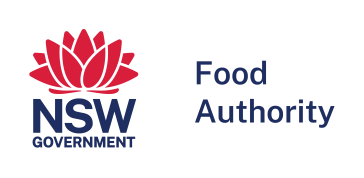- Print this page
- Download as PDF
- Share this page
Labelling requirements for food sold in Australia and New Zealand are set out in the Food Standards Code.
Provisions for nutrition labelling on menus at larger fast and snack food outlets are also contained in the Food Act 2003 (NSW) and in Food Regulation 2015.
The NSW Food Authority is responsible for administering and enforcing these provisions in NSW.
Information on a food label is also subject to Australian Consumer Law, which prohibits false, misleading or deceptive representations (see Truth in Labelling).
Information that must appear on a food label
The Food Standards Code states that all food labels must contain the following information:
- Name and/or description of the food
- Identification of the ‘lot’ number *
- Name and Australian street address of the supplier of food *
- List of ingredients
- Date mark
- Nutrition information panel (NIP)
- Country of origin of the food
- Warning and advisory statements and declarations
There are additional requirements for some food.
Information must be legible, prominent and in English. If a label is in another language, that’s okay, but the essential information must be in English.
* Food labels are legally required to show the name and Australian or New Zealand business address of the manufacturer or supplier (packer or vendor importer) plus the lot and batch number of the food (or date coding) to enable efficient food recalls. Food is recalled when it poses a possible public health and safety risk to consumers.
Do I need a food label?
Packaged food for sale must generally have a label, however there are some exceptions.
Packaged food does not need a label if it is:
- in an inner package, not designed for sale without the outer package
- made and packaged on the premises from which it is sold
- packaged in the presence of the purchaser
- whole or cut fresh fruit and vegetables (other than seed sprouts) in packaging that does not obscure the food
- delivered packaged, ready to eat, at the order of the purchaser
- sold at a fundraising event
- displayed in an assisted service display cabinet.
If a product has more than 1 layer of packaging, only 1 label is required. An exception is portion packs not designed for individual sale with a surface area of 30cm2 or greater - these must be individually labelled.
For more information see our short quiz Do I need a food label?
See also:
- Labelling – general requirements (PDF, 113 KB)
- Labelling - date marking, storage conditions and directions for use (PDF, 124 KB)
- Standard 1.2.1 - Requirements to have labels or otherwise provide information
Find out more
- FSANZ Food law, treaties and agreements
- National Measurement Institute
- Therapeutic Goods Administration Labelling & packaging
- Food Standards Code Part 1.2 Labelling and other information requests
